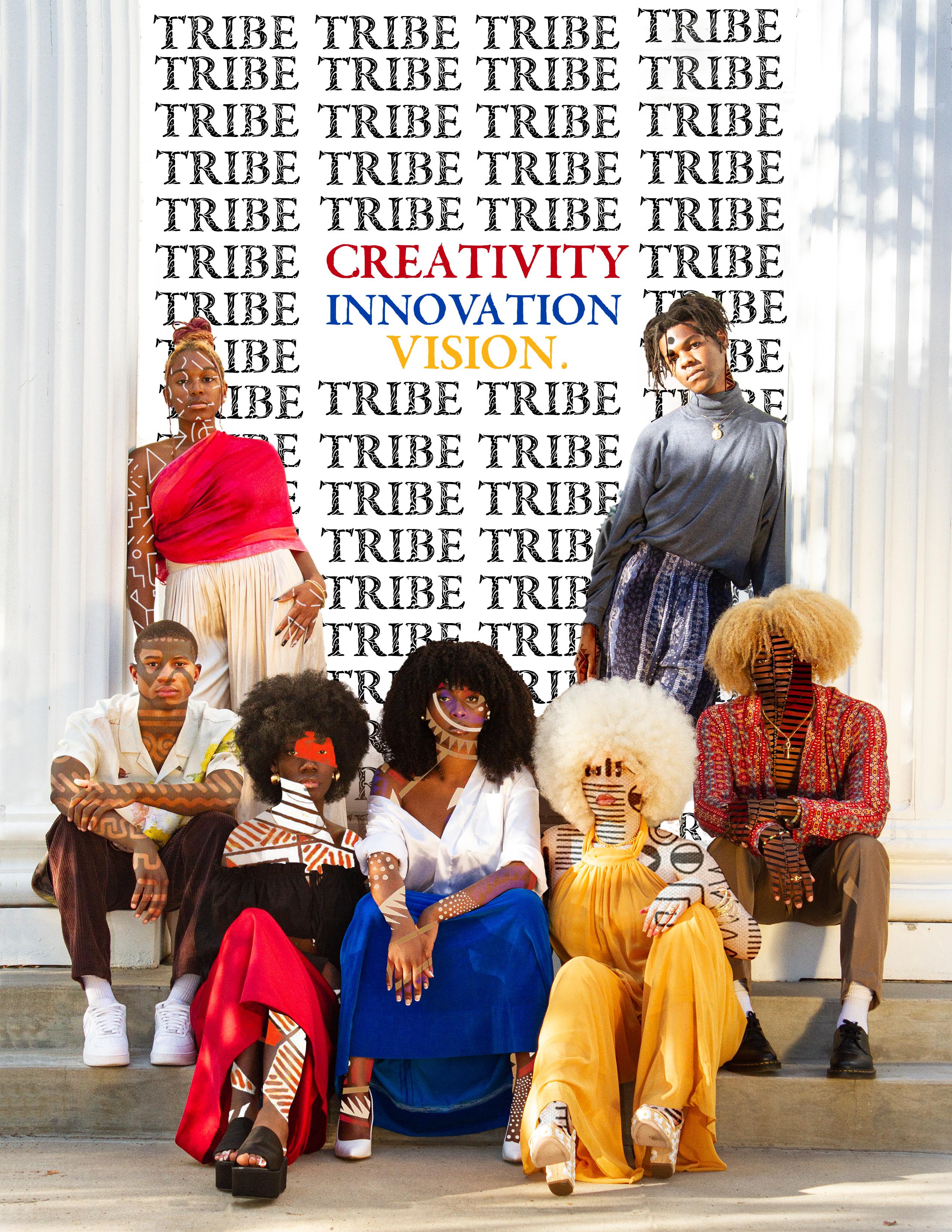

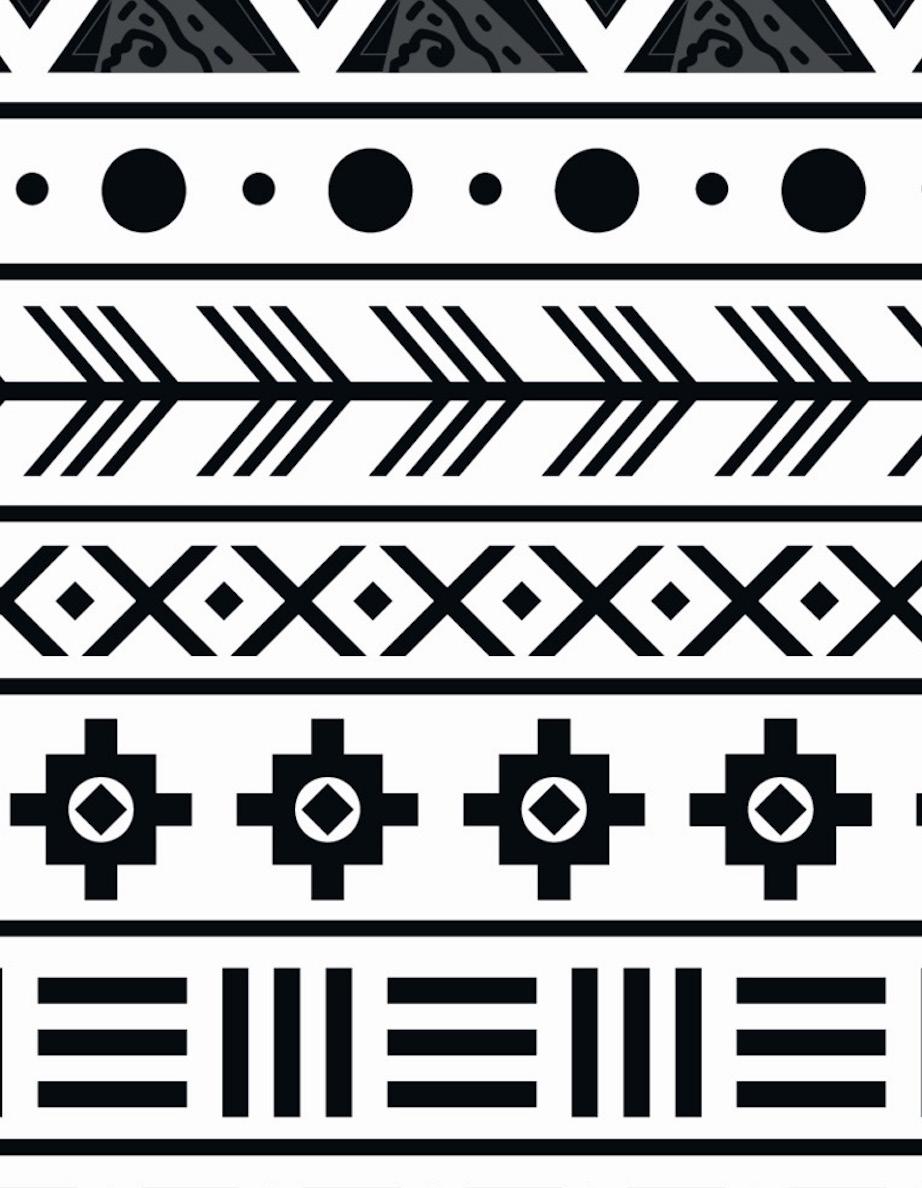


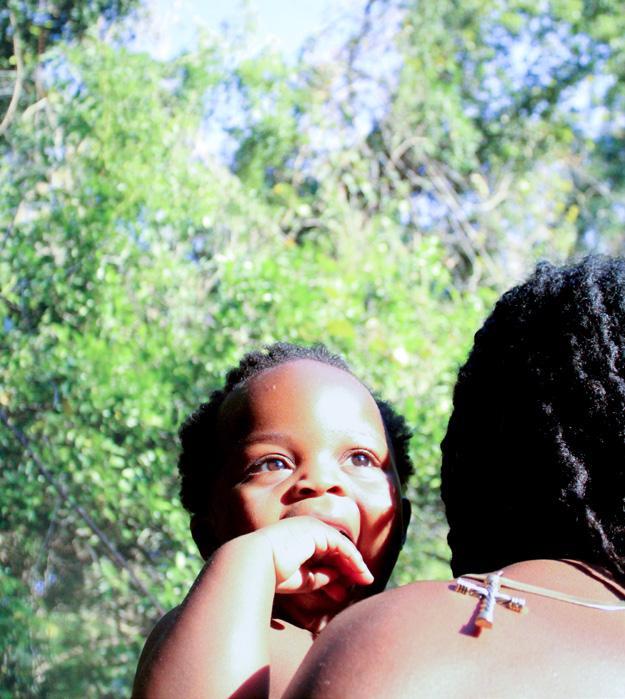

CONTENTS Godfather Meet The Journey Tribe Letter from The Editor Our Nile: The 32. 24. 33. 34. 38. Inherited fears My Tribe (continent) Inheritance 2 JOURNEY MAGAZINE - November 2022 4. 6. 8. 22.

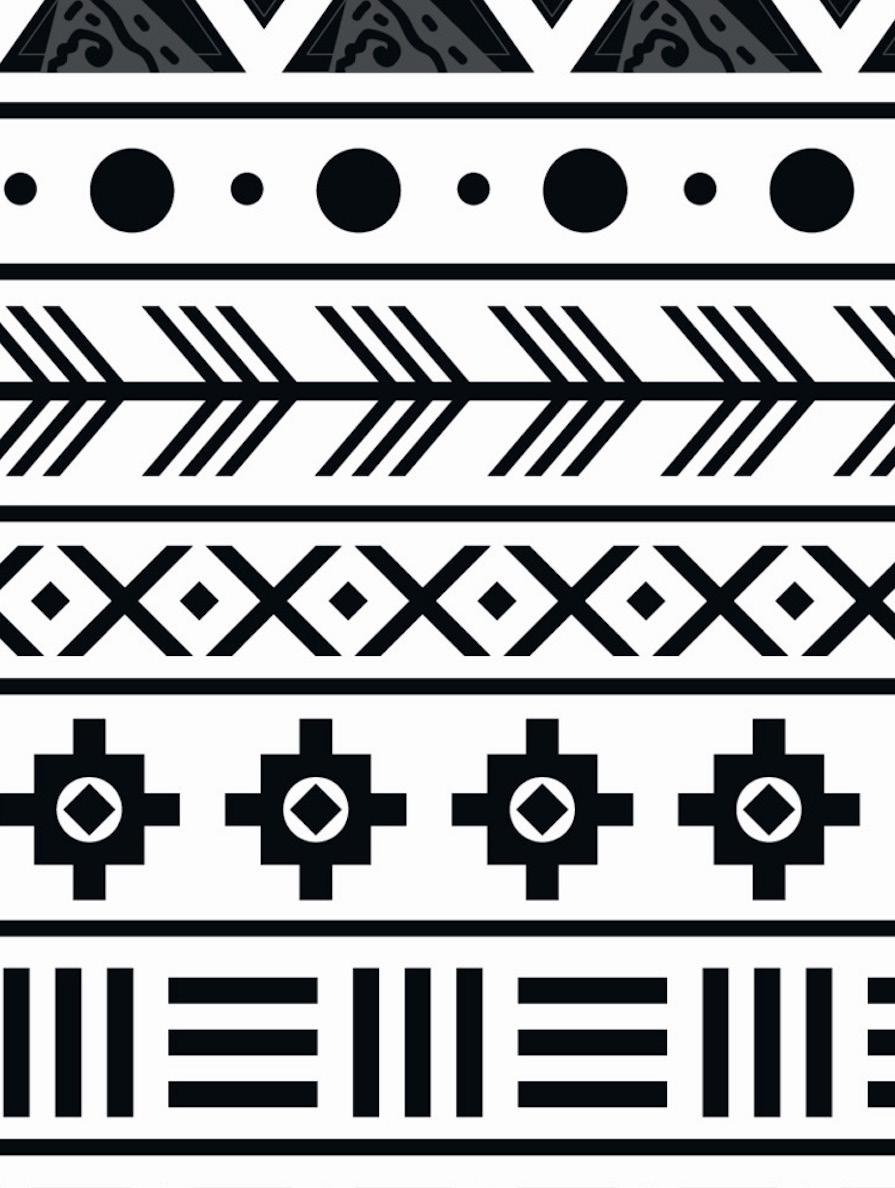

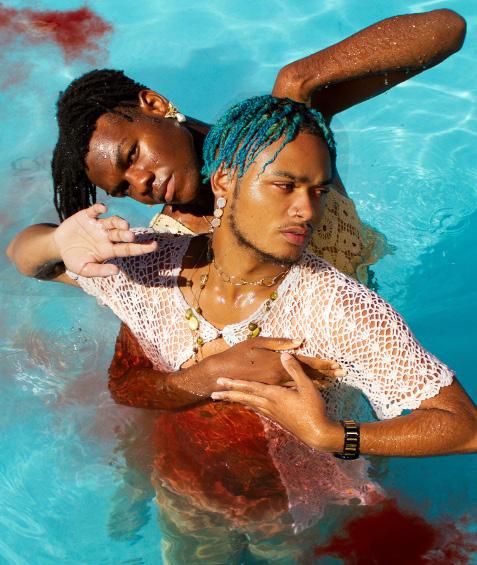
CONTENTS SisterHood BrotherHood 27. 36. Blood and Water Tribe i never met, but always knew Hair Affair JOURNEY MAGAZINE - November 2022 3 10. 12. 14.
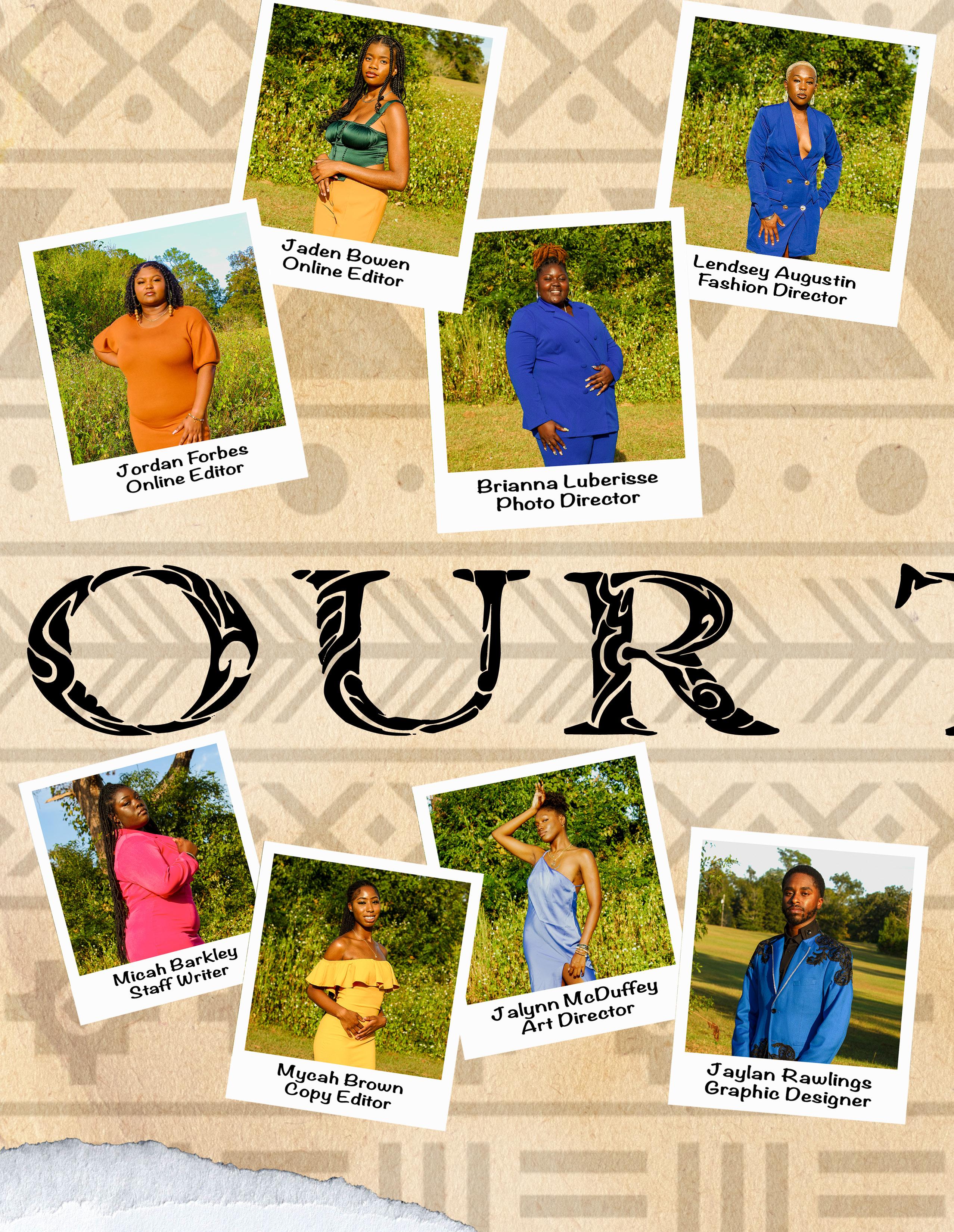
4 JOURNEY MAGAZINE - November 2022
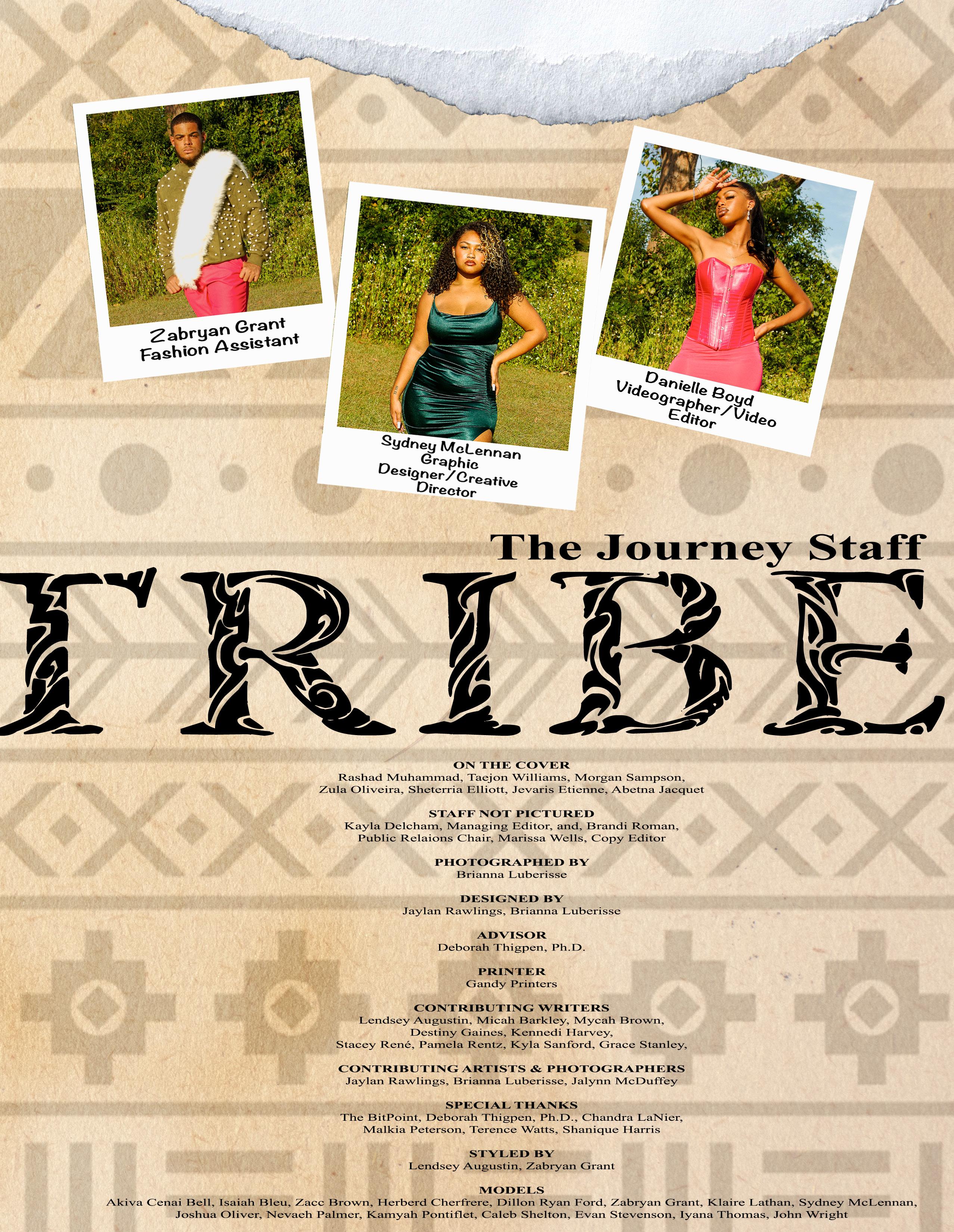
To my newfound Journey tribe, I’ve never met a more alluring, inspiring and loyal group of beings. You all, respectfully, have earned a place in my heart for every distinct moment in time we shared in the making of this issue. Whether it was thrift shopping to commemorate a free holiday – cheers to Ian – or any one-off laugh that only the Journey walls would’ve heard. The creativity, energy and love of this bunch is unmatched and a carbon copy overall. There will only be one fall 2022 issue, and I'm truly honored to work alongside each and every one of you, the latest additions to my tribe.
To my tribe, I thank you all for the unending streamlining of support. You nurtured me, protected me, housed me, and loved me. Not only that, but you loved the greatest extension of me – Cairo. “It takes a village” goes without saying, and I’d be justified in saying my village is top-tier. Where the world often sees a smile, you all see an award-win ning mask and peel away at each layer until I’m left bare.
To Cairo, I credit all of my successes from May 17, 2021, and on to you. You are the epitome of sonshine and I rest assured that my greatest achievement is my role as your mother. While in labor, they coach me in the art of “breathing for your baby,” and since then, I recite this newfound mantra daily. As a reminder to myself, your existence reflects the truth that my life is no longer my own and its worth grows exponentially.

To the old me, your rebirth was necessary. The Tribe Issue is a testament to your value to others while on this Earth. There is no time like the present; you have reminders of this left and right. You are loved. You are light. You are a leader. The talents you bear are handpicked and God-given; never forget this. As a Black girl in this world, your voice is your power. Whenever it is necessary, refocus your vision and seize every moment as if it is your last. Then, at the end of every day, raise your glass to completion and begin again.

From the Journey office, with love,
6 JOURNEY MAGAZINE - November 2022
To the reader, I hope you found your sense of belonging while flipping through these pages. The amount of time, manpower, creativity and love poured into the well that is the Tribe Issue is innumerable. As the most significant project to date, “proud” is an understatement for the overwhelming amount of joy that consumes me when I see the product of like-minded individuals collectively pouring into a body of work. The Tribe Issue is what happens when people come together in genuine love and appreciation for art. Each unique, distinct contribution makes up this issue and we hope you enjoy it.

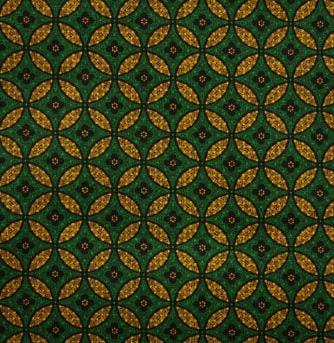

JOURNEY MAGAZINE - November 2022 7

8 JOURNEY MAGAZINE - November 2022
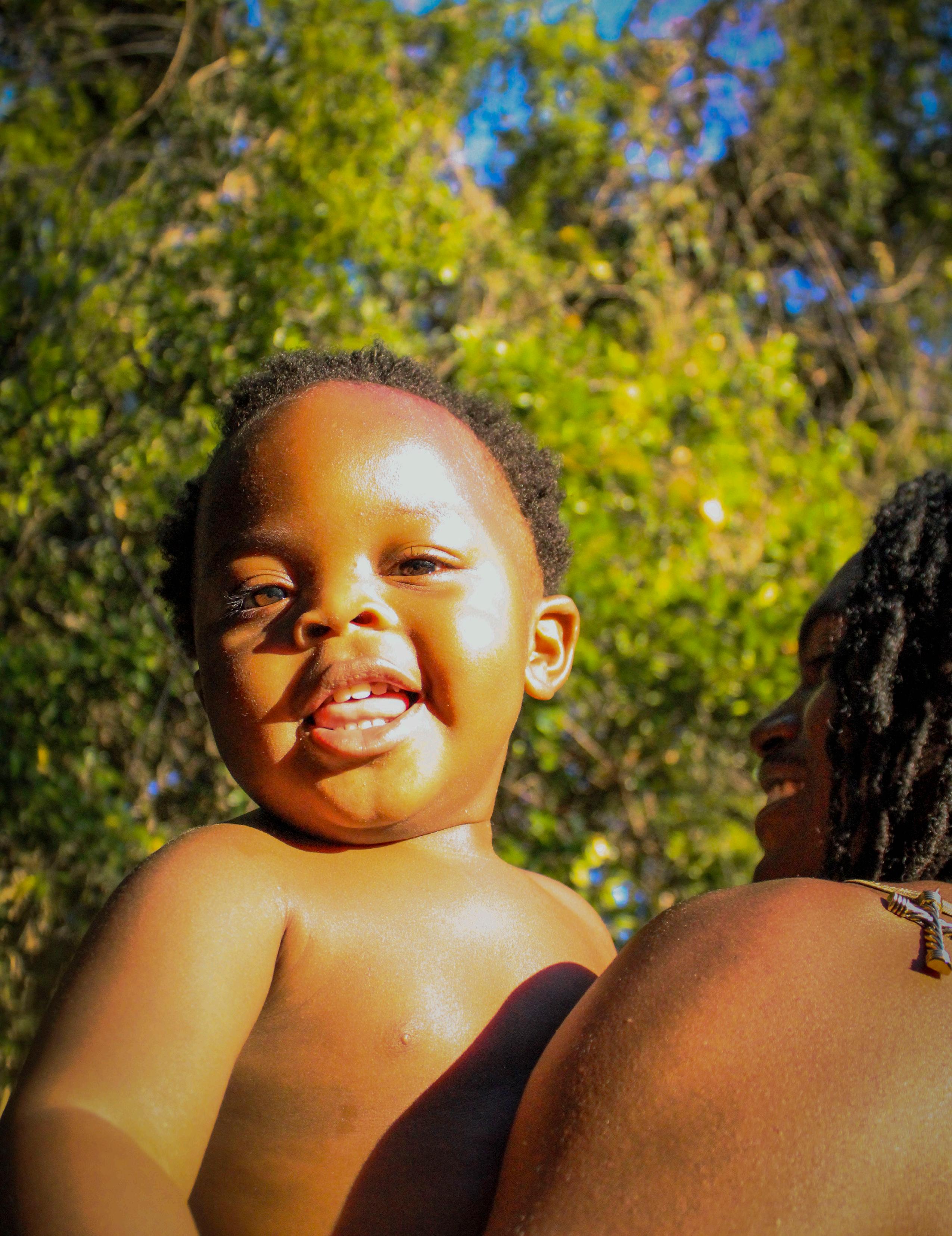
JOURNEY MAGAZINE - November 2022 9
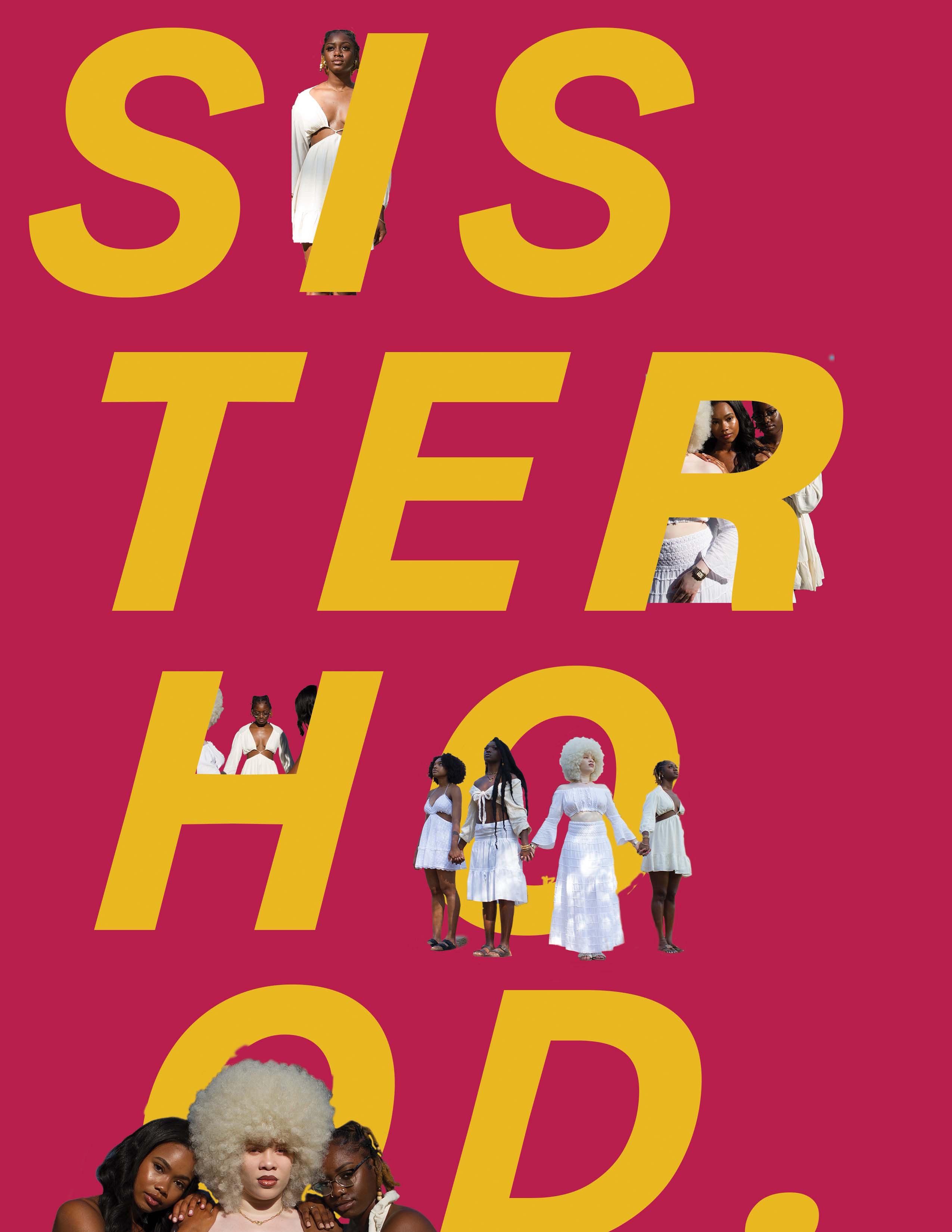
10 JOURNEY MAGAZINE - November 2022

JOURNEY MAGAZINE - November 2022 11
Journey 12 12 JOURNEY MAGAZINE - November 2022
Journey 13 JOURNEY MAGAZINE - November 2022 13

14 JOURNEY MAGAZINE - November 2022
THE WEIGHT OF THE CROWN
By: Stacey René
Ethereal in appearance, as each gravity-defying strand endlessly merengues around the other; yet as heavy as the world the Titan Atlas was condemned to carry on his shoulders for all eternity. Black hair is both; as if this was a game of tug-o-war between acceptance and resentment.
THE MEANINGS BEFORE THE MANACLES
Black hair has always been a prime part of iden tity. Rooted in the African cultures whose tribes recognized the power their hair wielded, tresses held meaning in every thread, braid, and shave they endured. Before the colonization of the continent, African tribes used their hair to indicate things such as wealth, status, spirituality, and ethnic identity. In Senegal, young girls of the Wolof culture adorned partly shaved heads to express they were not of courting age. Down the coast into Sierra Leone, the Mende women symbolized their femininity through the thickness and length of their locks. Their plentiful strands carried the weight of their crowns, proving them to be a life force. Across the continent, in Rwandan culture, men and women wreathed their hair into the Amasunzu style. It was fashioned into crescent-shaped mounds, shaved into crisp curves that would hypnotize admirers with its never-ending spirals. Men expressed their bravery and prestige with the updo, while some women personified their virginity. Hair always carried immense significance in its versatility within Black culture, even as its essence was soon to be deprived of millions in the motherland.
THE PERMEATION OF PROBLEMS
Upon being forced onto plantations, enslaved people were dehumanized and defrauded of their identities. It was the commencement of the deep-rooted gen erational issues to come. The hairstyles that distinguished them were shaved off in an effort to control them. Black people learned to assimilate into what would become their new culture without the herbal treatments and tools they used for grooming in Afri ca. Bacon grease, kerosene, butter, and sheep brushes maintained their manes. And with the emergence of biracial enslaved people came the birth of issues such as colorism and texturism.
These issues created a chasm between the community and still affect it today.
Jae’Dah Nave, a junior biology pre-med student, decided to become natural and lock her hair. Yet, the texturism ideals from slavery taunted her before she could embrace herself.
“I was trying so many different products because I wanted that loose curl,” Nave said. “For every special event, every one had straight hair; So how was I going to fit in with myn afro? Everyone thinks that’s the professional look. That made me uncomfortable becoming natural.”
The narrative that Black hair and its “wooly” appearance was undesirable would shape the way it would be viewed for centuries to come. The Journal of Southern History recorded how their roots prevailed while the issues still permeated. Enslaved people reinstilled power into their hair by forming new grooming techniques and even braiding it into a map to freedom. Hair was a way to take back the core value of pride, which was aimed to be destroyed by any means. was undesirable would shape the way it would be viewed for centuries to come. The Journal of Southern History recorded how their roots prevailed while the issues still permeated. Enslaved people reinstilled power into their hair by forming new grooming techniques and even braid ing it into a map to freedom. Hair was a way to take back the core value of pride, which was aimed to be destroyed by any means.
A REVOLUTIONARY STRUGGLE
“You can kill the revolutionary, but you can never kill the revolution” were words once declared by Black Panther activist Fred Hampton. The late 1960s when a change was coming. She and her entire family had been natural, al though she was no stranger to the hot comb. But with the ever-changing trends that manipulated natural hair, Wil liams never resented her roots. “I loved my hair no matter the state it was in,” Williams said. 1970s disco invited voluptuous do’s, while the Jheri curl spread like wildfire in the 80s. Legends like Donna Summer, Chaka Khan, Whitney Hous ton would sport bouffant hair imitating the shapeliness of Black manes. Others such as Michael Jackson, Prince, and Rick James donned a sleek Jheri curl, making its way into mass media with films like “Coming to America.”
Journey 15
JOURNEY MAGAZINE - November 2022 15
There was an internal war brewing between Black people who were comfortable in their undesired kinks and those who preferred their “soul glo” style to imitate “good hair.” In a speech, Hampton even once said, “They can sell natural wigs to ni**ers that’s got natural hair already. And see, this is a shame.” Williams proudly believes, “There’s no good or bad hair. There’s just different textures that allow you to wear different styles.” And it had to be noted that Black hair was going through a rebirth itself while fighting its own demons.

A DIFFERENT WORLD
To have experienced the 1990s was to be living in a different world! Black excellence had steadily been on the rise; but baby, excellence was no longer the word to describe it–supremacy if dared to say! In the world of hair, Black people were becoming more connected to their roots than ever—afros and box braids in every shape, size, and color Twists, locs, or cuts with a flat top fade resembling the Amasunzu style. Straight hair was still in for some who styled it into a swooped-bang French roll, finger wave, or asimple press. The “Just for Me” relaxer had been released then and aimed at young Black girls, a possible attempt to quell the new revolution. Yet versatility was unmatched at this time, and its embracement was only the beginning. Women such as Lauryn Hill, Nia Long, and Brandy were among many who were changing the narrative. ‘90s heartthrobs such as D’Angelo, Larenz Tate, and Ginuwine were proclaiming with their hair how men can be multifaceted just the same.Noah Meren, a graduate student in social work, had always adorned long tresses.Throughout the journey and being confident in themselves,” Meren said.And with the birth of Hip Hop, people embraced their expression to the fullest. Natural hair was resurging in strength and style in the early 2000s. Actress T’Keyah Crystal Keymáh, an alum of Florida A&M University, graced her natural hair proudly on ‘’That’s So Raven.” Sew-ins were rising in requests also as video vixens influenced the perception of beauty in hip-hop culture. With the various trends being adorned across the community, Black hair was reclaiming its power even louder than before.
Journey 17
16 JOURNEY MAGAZINE - November 2022
From the mid-2000s to the present day, Black people have been reinstilling meaning into their manes. Staple styles from back in the day have been revamped and rejuvenated. From rope twists to passion twists and dreadlocks to butterfly locs, this generation of Black youth opts for originality rather than simply fitting in. Nylah Boggan, a junior animal science student, started her loc journey in 2017. Before making that decision, she manipulated her natural hair in an effort to fit in to stop the backlash. But upon choosing self-love, Boggan recognized just how impactful acceptance of thyself was.
“I learned that how you present is how you feel on the inside,” Boggan said. “It made me get in touch with my feminine energy. It made me more proud and confident in myself.” According to a Mintel research study, relaxer sales plummeted 26% in 2008 and 36.6% more between 2012-2017; most likely due to the natural hair movement’s popularity. Some still struggle to accept their hair by never letting it see the light of day. Whether hidden under a lace front wig or braids, it will never feel “done” to them. It has been a long-lasting battle to accept thyself and what comes with that naturally. Yet the Black community has made immense strides in creating new meaning for their hair,reminiscent of the ones who came before them. Men are becom ing even more experimental with their hair and learning to do it them selves. Afro-hair is becoming accepted in places like corporate America with laws like the Crown Act. This tug of warwithin society for acceptance is far from over. Yet, as heavy as the crown’s history holds, it still reaches for the sun in all its delicacy.

AN
ODE TO ORIGIN
JOURNEY MAGAZINE - November 2022 17
Hair’s the Impact on Black Culture
By: Lendsey Augustin
As a Black woman, hair has always been a part of my iden tity as it’s played a vital role in who I am and how I want so ciety to perceive me. If my hair wasn’t done, nothing I wore looked right, and my confidence dropped from 100 to 0.
The history behind hair in the Black community traces back to when our enslaved ancestors tried to escape their cap tors; because many couldn’t read or write, they mapped out routes in each other’s hair. Through time, we’ve used it as a symbol of resistance and survival, and we pride ourselves on that very notion. In today’s society, the way we can express ourselves is a staple in our culture.
Kierra Brown, a licensed loctician from Tallahassee, FL, has been doing natural hair since 2018. She specializes in loc care and has had her locs on and off for about 10 years.
“I think the fact that our hair comes in so many textures and natural colors,” Brown said. “As a Black woman, it speaks for us. It’s so many versions of us all, unique and beautiful; it’s our crown.”
Protective styles have also been a significant part of our his tory. They have been used to grow our natural hair by pro tecting it from constant manipulation. It is also when we do the most bonding with our loved ones, as the task of braiding hair can take all day.
Jasmine Brown, a braider from Tallahassee, FL, has been do ing braids in the city since 2019. Brown began to take things into her own hands due to her unpleasant experiences with different stylists growing up.
“My passion for hair started in my freshman year of high school,” Brown said.“I used to hate going to different peo ple doing my hair. Some were very heavy-handed, which I hated. Some were yanking my hair and charging an arm and a leg just to do my hair.”
Hair is a rooted part of where Black people originated, embedded in every aspect of being a woman. The hues, textures, and colors produced in the Black community are diverse and rich. As a whole, we’ve evolved and grown in accepting our hair, embracing every coil and curl, and ultimately appreciating its story
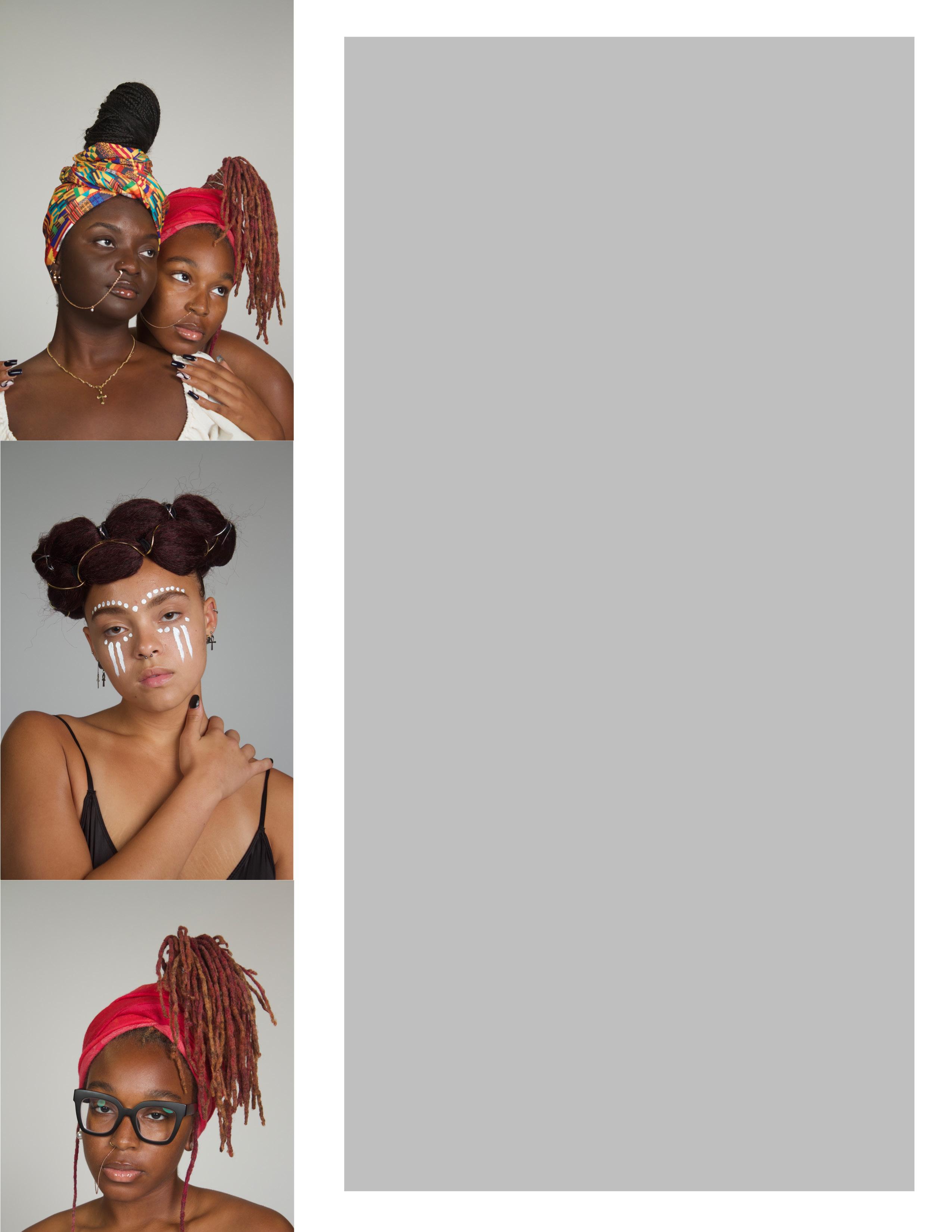
18 JOURNEY MAGAZINE - November 2022
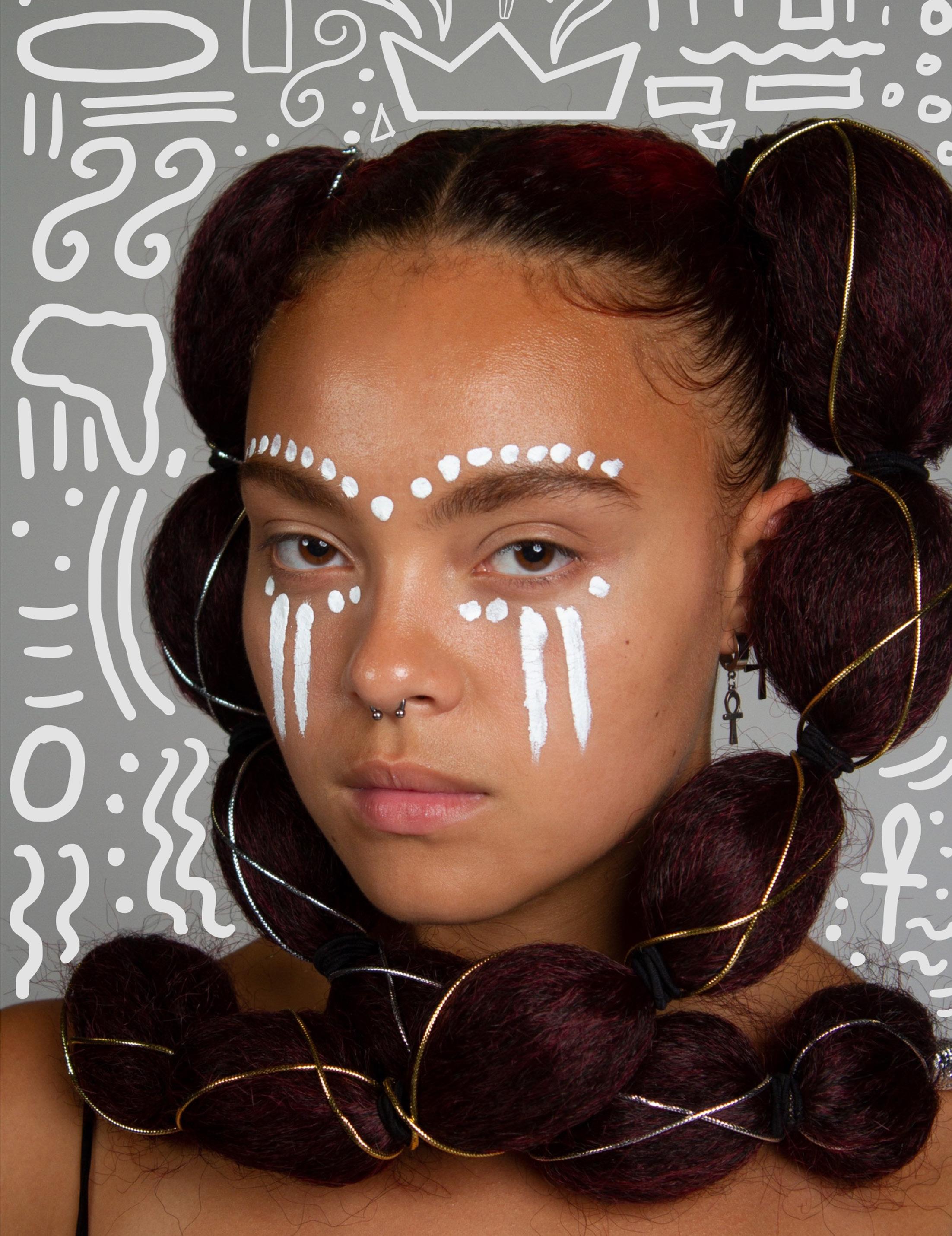
JOURNEY MAGAZINE - November 2022 19
Journey 20 20 JOURNEY MAGAZINE - November 2022

Everybodyneeds somebody, but not everyone has somebody. Everyone needs someone who celebrates them for their accomplishments, no matter how big or small, because life isn’t easy, and they deserve it. Everybody needs somebody to cherish every piece of who they are, especially while they are still alive and able to feel genuine love and appreciation. There are still moments when we sequester ourselves into feeling quite the opposite. To quote the words of Grammy award nominee Jhene´ Aiko, “I don’t need nobody” can soon flow from one’s parted lips. Human nature is to desire companionship and seek it in others, whether it be through friends, family, or lovers. At some point, most individuals experience a sense of loneliness when the need for social interaction fails to meet expectations. When one is constantly disappointed and dissatisfied with interpersonal connections, it can become debilitating and repetitive. Once at this breaking point, it’s easy to develop a withdrawn persona.
For these reasons, we grow to find comfort in our solitude.
Growing up as an only child, Alandra Martin says she enjoyed the luxury of not having to share and being granted everything she desired.
Martin’s childhood friends were the neighborhood kids, who, with time, moved away. When she grew a little older, Martin filled her free time with cheerleading, technology, and prioritizing her academic success. As an only child, Martin often found herself in the company of adults, which she believes is why she now tends to gravitate toward older people.
Aside from these times, Martin spent the majority of her time alone. Never needing to depend on others for companionship, Martin carried some of her only child tendencies to college when she moved to Tallahassee.
“As I got older, I kinda started to embrace being alone, so now I like being alone rather than being with a bunch of people,” Martin said.
Throughout her primary years, Martin learned one of the most critical life lessons—that everybody is not your friend. People have proven to be sources of frustration and emotional turmoil rather than comfort and serenity.
Although her new environment enforced this ideology, Martin did say that since coming to school, she’s been able to develop deeper connections with people. These connections helped her keep a level head and make informed decisions.
Unlike Martin, who has had to learn to open up, some people have done the opposite.
Devin Nobles, a third-year computer engineering student, has been coping with the new idea of being left on his own. Nobles is one of four children, so the most strenuous task was parting from his twin brother, Derrick.

Up until their first year of college, the two had been inseparable. Since birth, they had done everything together, from playing on the same football teams and sharing a room.
But while Derrick stayed in Alabama and continued to Troy University, Devin decided to move four hours from home to Tallahassee, where he attends Florida A&M University. For the first time, he was alone.
Growing up and having Derrick by his side, Devin always had someone to depend on and assist him when necessary. As the two split to further their education, the responsibility of replenishing his cup stared him dead in the face.
“The places he was helping me out in, I had to learn to do that for myself,” Nobles said. “I was alone until I found somebody in college who picked me up where I was lacking.”
Nobles says that becoming involved with on-campus organizations has contributed to combating the loneliness he initially felt upon move-in. It took him some time to adjust, but he eventually found his place and tribe.
22 JOURNEY MAGAZINE - November 2022
Tearya Williams is a senior transfer student from Howard University who spent most of her life as “the new girl.” Williams moved around a lot as a kid, making it hard for her to build strong friendships and bonds.
“It made me shy growing up because I always moved,” Williams says. “I never stayed anywhere long enough to make any friends.”
Williams says the few friends she made growing up were always authentic. Hence why she now prefers fewer quality friendships over numerous acquaintances.
After transferring during her junior year, again, she was the new girl. Since then, she’s been able to find a few people who she can truly call friends. Williams expresses gratitude for those whom she can whole-heartedly confide in.
Like Martin, Williams’s challenge now is learning how to open up more.
Similarly, Florida State University student Erin Edwards made connections within the organizations she has deemed her own. Hailing from Columbia, Maryland, a city often referred to by its residents as a “bubble,” Edwards grappled with adjusting to the new environment and culture.
Edwards always knew that she wanted to attend college out of state. According to Edwards, the smallscale city would make randomly running into old classmates inevitable at the local campuses. Now 14 hours from home, Edwards is one of four students from her high school to attend FSU, with only two other former classmates taking residency in the city as students at FAMU.
While the comfort of knowing you have a piece of home in these familiar faces can relieve the anxiety of loneliness in a new city, Edwards wasn’t close to them. She still needed to find those who would make the best of her college experience. She needed to find her tribe.
“I really came in with no one,” Edwards says. “So I had to forge my own groups, you know, find what worked for me and really put myself out there.”
Through social media, Edwards connected with a group called Her Campus, where she was able to build lifelong friendships. Now studying abroad in Italy, she feels more comfortable meeting new people and has found better ways to cope with her feelings of loneliness.
Our greatest gifts are not found in worldly things like money, clothes, or status but in the love, connections, and relationships we experience with one another.
We’ve all felt alone. Whether it be because you never felt like you had anybody to rely on, like Martin and Williams, or like Nobles and Edwards, you’ve recently had to adjust to a new feeling of loneliness.
Know that you are not the only one consumed by the imminent feeling of loneliness. Look around; some faces struggle to mask their solitude. Voices are shouting for seclusion, yet, in the silence, they long for a soulmate.
As easy as it may be to hone in on the need to be independent, (thank you for the encouragement, Jhené) it is within our instincts to rely on our tribe.
At the end of every day, we all need somebody.

“The people I know, they just wanna know what’s going on I can’t tell a soul, no, I can’t tell no one.”Jhené Aiko
JOURNEY MAGAZINE - November 2022 23
“The people I know, they just wanna know what’s going on I can’t tell a soul, no, I can’t tell no one.”Jhené Aiko
MINE
My tribe dates back to January 1981 when my grandparents, Johnny and Barbara Davis, were united in holy matrimony. A 1971 bowl game set the stage for a lifelong union of tender love and unending support. My grandparents were hard workers, striving to nurture their descendants in a world where Black children are burdened with trauma early on.
Being raised on a solid work ethic instilled in me by my matriarch and patriarch, I knew every decision I made would be a reflection of them. Although a hardworking single mother raised me, I wholeheartedly credit my academic success and ambition to my grandparents.
My grandfather, a proud graduate of Bethune-Cookman University, is the main reason I decided to attend Florida A&M and study broadcast journalism. He and I were diehard New England Patriots fans who spent hours watching Sunday night football, all while spilling buttery popcorn on our brown leather couch. I always say I was the son he never had. After countless Sunday night football sessions, I noticed not many Black women commenting on the games. A tradition set the stone by my grandfa ther inspired my dream of becoming a sports commentator.
I am thankful for the sacrifices and contributions my grandparents made not only to myself but to our family and our community.
Working as a middle school math teacher for 32 years, my grandmother has been able to pour into countless other children and me the art of mathematics.My grandmother used her tough love and “mental math” skills to train me and her over 12,000 students in multiplication, frac tions, and algebra. Teaching over 12,000 students, my grandma knows them all. When walking in our local Winn Dixie, running into Ms. Davis is like winning the Super Bowl.

On the other hand, my grandfather impacted our community and me in his own way
Growing up in Lake City, Florida, during segregation, I truly understood why my grandfather conduct ed himself the way he did. He would tell me stories about vividly seeing members of the KKK burn down houses, Black and white restrooms, and …
My grandfather, unfortunately, passed on November 18, 2018, leaving behind an impactful legacy of a successful car dealership, a mentor to many young men, and a high school championship leader. He planted seeds in the community and me by teaching us that nothing in life comes easy. “You have to work in order to progress” is something he always told me.I know my grandparents are genuinely proud of me and everything I have accomplished. I do not know where I would be if it were not for them.
HERS
Kendall Williams, an aspiring legal correspondent, also credits her strong work ethic to her matriarch and patriarch. Born in Hayward, California, Williams and her family moved back to Tallahassee to be closer to family.“The sole reason we moved back to Tallahassee was for my sister and me to form a bond with my grandparents,” Wil liams said. Since moving to Tallahassee, Williams’s bond with her grandparents has become indestructible. Although Williams’ story differs from mine, growing up in a two-parent household, she still spent most of her time with her grandparents. A vital memory for the three is their 6-year-long streak of sleepovers. During this time, Williams understood and developed an appreciation for them.
Johnny and Barbara Davis
HIS
A senior public relations student, Caleb Shelton, believes that matriarchs and patriarchs are essential, critical tools for knowledge and wisdom within our communities.
Shelton grew up with his grandparents more deeply than with his parents. He felt his grandpar ents were his escape when he could not open up to his parents. As a granddaughter, I can attest to this myself. Sometimes our parents are so wrapped up in their struggles that it’s hard for them to consider our psyche. Thank God for grandparents, right?
During segregation, Shelton’s grandparents experienced and endured a lot. Shelton feels as though, as a nation, The U.S. is trying to weed our African-American history, so without our grandparents, we would not know anything about past generations.

“Our grandparents are living examples of what has happened to our people,” Shelton said. Getting knowledge from our grandparents about what has happened in the past will allow us to understand events that have occurred and not let them repeat themselves.
Growing up in the small town of Milton, Florida, Shelton would spend hours with his grandfather during annual fishing trips and fish fry cookouts, all starting before he was even a thought! During this time, Shelton learned that keeping your family at the root of everything was everything. With this, he was able to form a deeper appreciation for his parents and understand their struggles.
Shelton credits his genuineness and spirituality to his grandparents. Being taught not to judge anyone, Shelton always tries to be kind to everyone he encounters.
“My grandfather always taught me to be a fisherman of Christ,” Shelton said. Without their help, Caleb believes he would not be the strong and caring Black man he is today. In the future, Shelton hopes to establish the foundation of love and commitment to his own family and teach them what he was taught; to keep your family at the root of everything.
OURS
From ancient Africa to now, the older generations have always been at the root of our tribes. From pouring into us with knowledge, wisdom, love, and support, their love and compassion for us as their grandchildren are unconditional.

As a granddaughter, I do not know where I would be without my grandparents. Although my grandfather is no longer with us, I am blessed to have still the matriarch of my family, my grandmother, Barbara Davis in my life. She has taught an abundance of life lessons that I will pass down to my children.
As for Caleb and Kendall, although our stories are similar yet different, we all still show our unconditional love for our grandparents. As granddaughters, Kendall and I were taught how a woman is supposed to be treated by our grandfathers. We were taught never to settle until we found who would love and adore us. As a grandson, Caleb learned what valuable qualities make a man and how to be a prominent, loving figure within his family.
I hope every child can have loving and supportive grandparents, just as Caleb, Kendall, and I were. They are the foundation of our tribe and will forever impact our lives, just as the Nile River has for the people of Africa.
The Parker and Shelton families tied by matriarch, Michelle Parker.
Kendall Williams and patriarch, Frank Williams.


JOURNEY MAGAZINE - November 2022 27
BLOOD & CHOSEN FAMILIES WATER:
By: Cordell Jones
“Blood is thicker than water” is a connotative phrase suggesting that familial relationships provide stron ger bonds than outside relationships. Is that truly the case?

One prominent example of the debatable thickness is the notion of chosen families. The idea, as defined by the article “Conceptualizing “Family” and the Role of “Chosen Family” within the LGBTQ+ Refugee Com munity” by Seohyun Kim and Israel Fisseha Feyissa, is “a group of individuals who deliberately choose one another to play significant roles in each other’s lives.”
This idea of chosen families has existed since the drag balls of 1869 during slavery to the current lives of LGBTQ+ mem bers. Especially for those within the black community, these familial structures give kinship in a form that even biological families may not even provide. The best show casing of this would be ballroom houses. The culture of ballroom has constantly fed back into the concept of chosen families, as they provide space and an outlet for people from marginalized groups.

28 JOURNEY MAGAZINE - November 2022
Luna Fae, a sophomore pub lic relations student at Florida A&M University and member of the Legendary House of Mattel, provides a point of view of this within her own house.
“I really enjoy being around the house as they always push me to be the best,” said Fae. “It’s nothing but good vibes.”
After meeting her house father in 2020 and becoming a full member of the house this year, she talks about how the house impacted her life.
“The house showed me that I’m not alone and there are people that truly care. Especially being on my own and not having that support from my actual family for being my true self”.
This viewpoint reflects the lives of countless young queer people, espe cially Black, Indigenous, and people of color. These familial systems help people find their homes when their own have turned away from them.
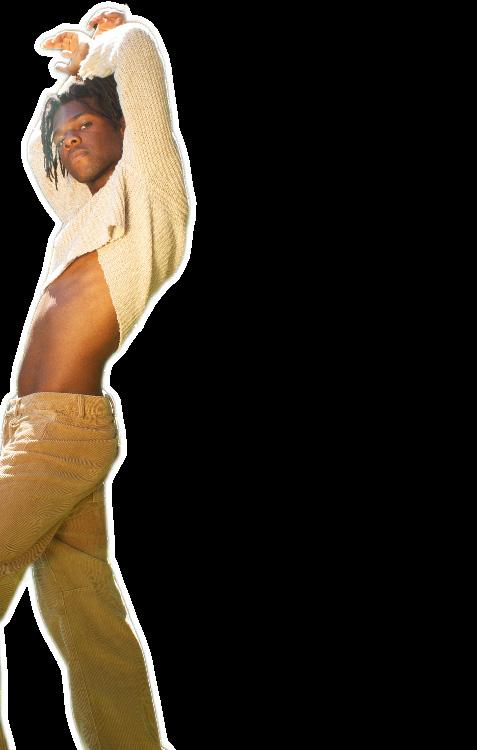
Though not everyone in the community has found these safe spaces, friends and clubs can provide familial relation ships that offer a self-authenticating sanctuary—even if they identified their tribe.
Akiva Bell, a junior psychology student, reflects on when she couldn’t find the tribe she now has.
“I am now a part of a chosen family, but it was tough to grasp my identity when I wasn’t,” said Bell. “It was my dream to be accepted by someone just the way I was. This ultimately made me tear down my con sciousness and self-esteem”.
Bell’s state of mind reflects the extensive population of Black LGBTQ+ members who often don’t feel tied to their blood. Personal self-worth and identity aren’t allowed to flourish as the environment they’re sur rounded by doesn’t allow them to express themselves authentically. The relationships people build within their chosen families, friendships, and communities offer to heal the wounds inflicted by the blood family they initially knew.
Surprisingly, even those with strong connections to their actual family still can find benefits from a chosen community. Greg Washington, a sophomore public relations student sheds more light on this ideal.
“I would definitely consider my friends and family to be that safe space for me,” said Washington. “How ever, I’m more than open to finding more people to connect with on that deeper vibrational level. People within the community find a sense of understanding through these groups that their biological families could not give them,” Washington said.
While for years, the argument of blood versus water rages on within the concepts of familial and tribe-like community closeness, one thing is for sure. These connections within the sphere of the Black LGBTQ+ community, whether they be through blood family or chosen family, help provide spaces for those who have been shunned so often by their own.
“We need family rooting for us to keep pushing us to make the most out of life,” Fae said.
Rooted within these communities and overall culture is the desire to find belonging and tribe. Though it can take a long time to feel connected to one, the power of self-discovery is unveiled by finding your blood or gaining togetherness through your water.
JOURNEY MAGAZINE - November 2022 29
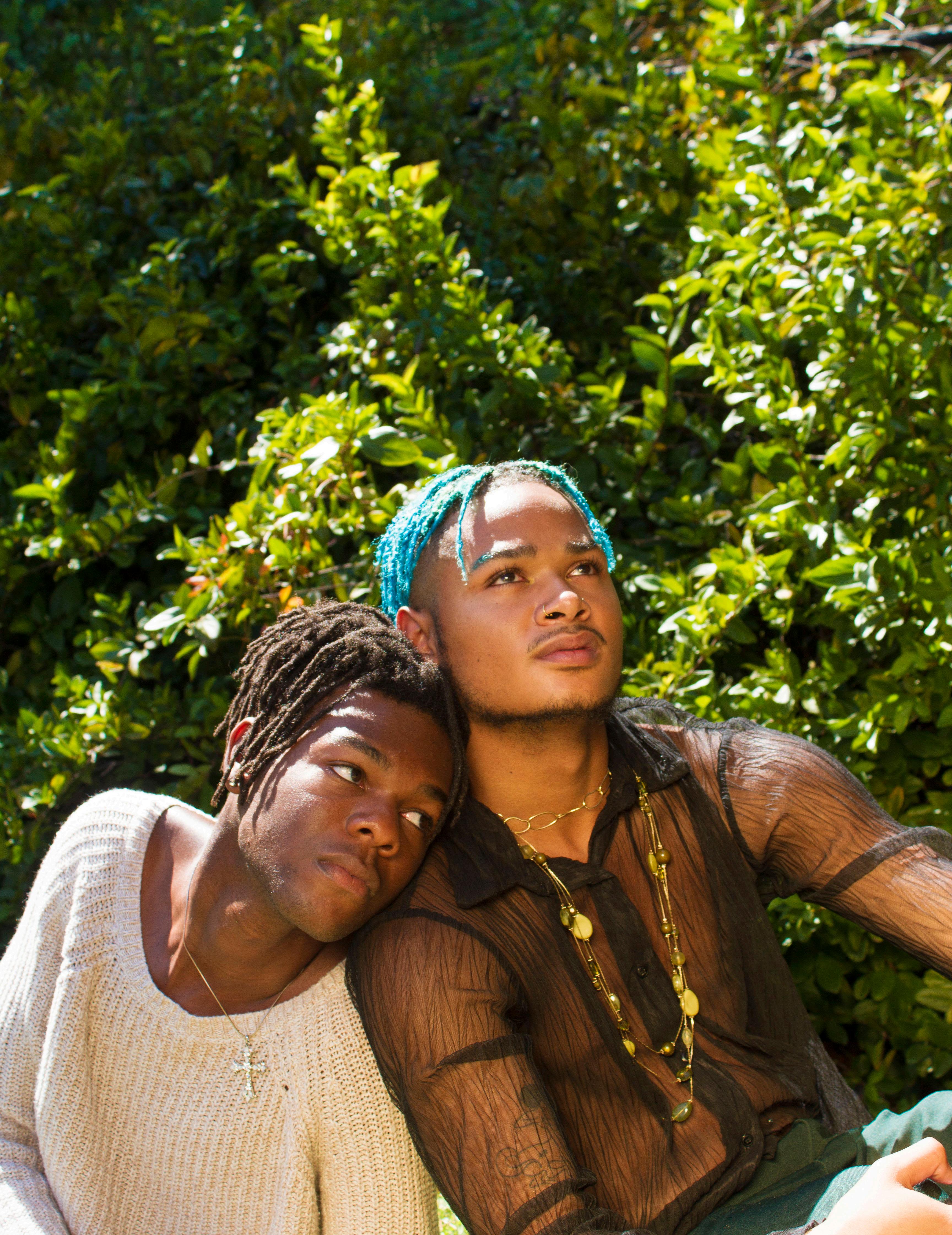
30 JOURNEY MAGAZINE - November 2022
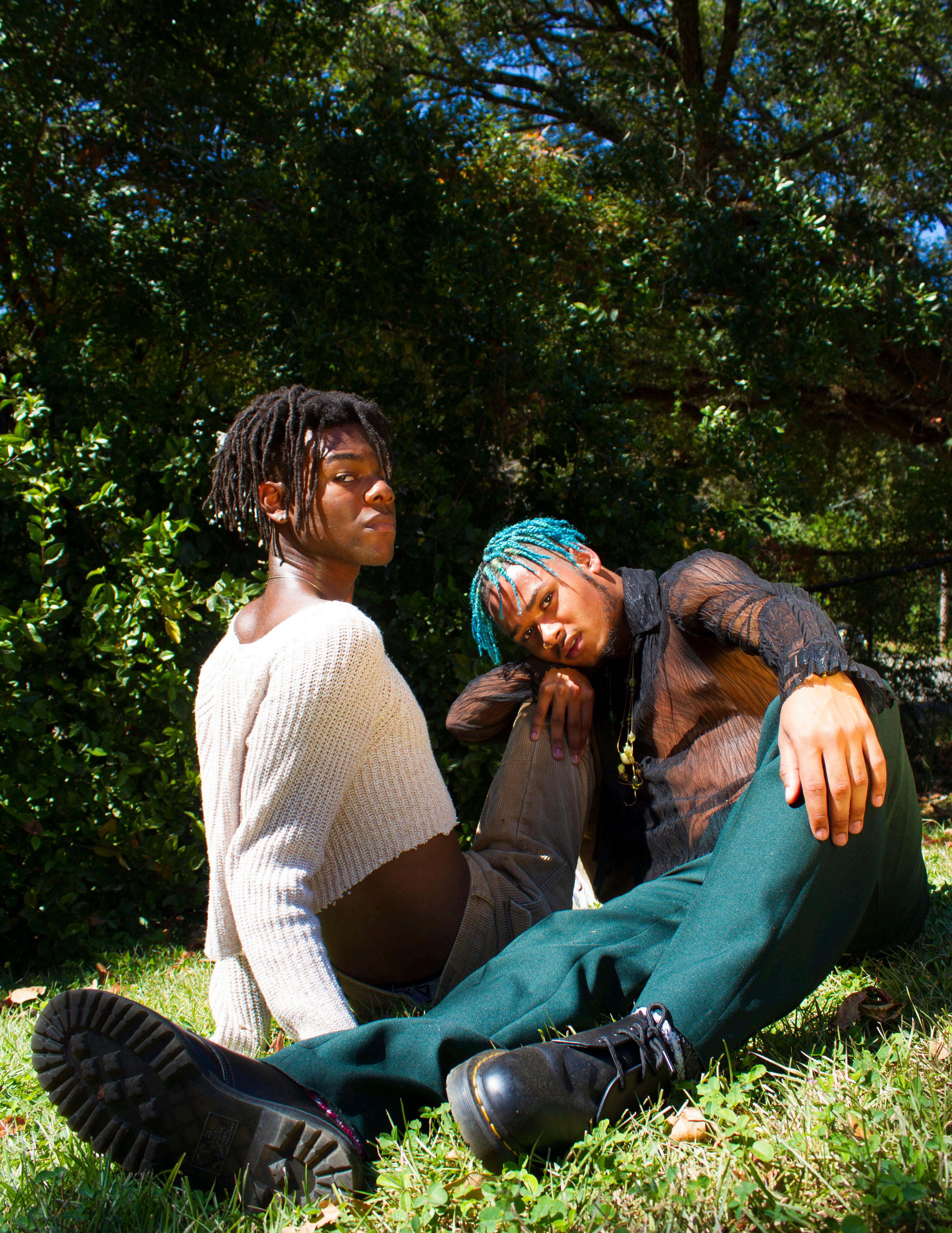
irlGT
Timeless girl
Sadness becomes you
Grasping for refuge in a body like a rope thrown overboard No anchor to hold you
Their promises and presence will slide through your fingers like sand in the Sahara while your skin prunes and burns simultaneously

And you
You will cry Scream
Choke into yourself
Realizing it was never an oasis they offered More like lake Mead
Lying in the belly are the bones of your fate
The history of hundreds before you doomed Skeletons serenade you in a siren song that women before you sung
No time to look in a closet for the boogeyman
Your worst fear stalks you in your cerebellum
Sends shivers down your spine
Thought the bed was cold before Nothing like when you force someone in it
Remember how you begged them to stay Remember how you dusted off your knees to embrace what could only be described as desperation
Desperation for a body to lay next to The generational curse
The preordained plan for Priscilla penned per the Parcae
The everlasting eulogy Eurydice eagerly endeavored to efface Now lies Mercy
Mutilated by the mere mention of monogamy
Mining for mention of malfeasance rather than acquiescing her masquerade of melancholy amidst marriage
Cry for me at the alter and throw me your bouquet
I can’t promise I’ll meet you there But wait for me…
In case we can be timeless.
By: Grace Stanley
imeless
32 JOURNEY MAGAZINE - November 2022
Inherited Fears
Despite Caribbean society stemming from the same region, each island has its distinct flair and sense of individuality. Jamaica’s motto is “out of many, one peo ple,” which refers to the unity between citizens regard less of their background. In different words, the saying journeys throughout neighboring islands that relate to the sense of everyday struggles.
One of those abating struggles is the way mental health is viewed and treated in the Caribbean.
Caribbean people, interchangeably referred to as West Indians, have a deeply-rooted history of prioritizing mental wellness. Mental illnesses and disorders can be misunderstood and go untreated due to a lack of will ingness to turn to someone else. As a result, these head strong mindsets can fall heir to succeeding generations. Many Caribbean people are taught to turn solely to reli gion and spirituality in times of struggle. While turning to spiritual beliefs may be an excellent form of strength, it cannot be the only source of stability for those suffering from mental health issues. Severe symptoms such as grief require significantly more attentiveness to one’s well-being. Gone unacknowledged, the impacts of a mentally ill loved one may have tremendous implications on families and ultimately perpetuate a neverending cycle of heartbreak.
Jasmine Morehead, a current social work graduate student at Florida State University, was inspired to pursue the field to create more representation and cultural competency. Morehead’s family is Jamaican, and she anticipates a future supporting other families. “I believe my family’s lack of communication when rough things happened prompted me to want to learn how to better myself in that way,” Morehead said. “Social work helped give me that realization.” The stigmas and lack of communication can be detrimental. In 2014, Guyana, considered a part of the Anglophone Caribbean culturally, was determined to have the highest suicide rate in the world, according to the World Health Organization (WHO). The rate, 44.2 suicides per 100,000 deaths, was more than four times the global average.
By: Kayla Butler
WHO also reported that, on average, a Caribbean coun try spends only 4.3% of its healthcare budget on mental health.
Resources can be slim and not the easiest to find, but also inadequate sometimes. The National Alliance of Mental Health believes cultural competency is essential for ther apists to understand people of minority cultures.
Naje James, a Bajan and Jamaican clinical psychology Ph.D. student, is researching Black mental wellness, racial and cultural identity, and access to services. She believes many people in Caribbean countries with mental illnesses go undiagnosed due to a lack of knowledge and access to resources.
“I do believe that the lack of resources contributes sig nificantly to the unawareness of mental health disorders, ”James said. “In general, not a lot of people are privy to the diagnostic systems we use to diagnose mental health disorders (ex., the DSM-V TR) in America. I believe that knowledge of these diagnostic systems are lower within the Caribbean, and coupling that with there being fewer providers, a dearth of knowledge on these disorders cre ates the issue of there being that lack of knowledge.” Jo-rohn Payne, a junior construction engineering technol ogy student at Florida A&M University, influenced his family to become more open to treatment. Knowing that his Antiguan family was not exposed to or familiar with therapy growing up, he believes he’s making a difference by opening them up to it.
“I believe children can teach their parents a couple things or two,” Payne said. “I believe my parents saw a change after I started and did encourage therapy for me. It in spired them to look for their own source of help for their mental issues.”
Specific initiatives, such as Caribbean Wellness Day, strive to highlight these issues more. Still, more data is needed in the Caribbean to truly understand the dispro portionate relationship between mental health resources. With time, Caribbean families can benefit from more mental health resources because it will break generational cycles and issues.

JOURNEY MAGAZINE - November 2022 33
Post Traumatic Slave Syndrome, as unbelievable and degrading as it may sound, is an intelligent theory developed by Dr. Joy DeGruy highlighting the essence of Black generational trauma passed down from centuries of slavery, decades after the idea of anti-liberation was “abolished.”
Karen Peters, a psychology instructor at Florida Agricultural and Mechanical University, states. Peters continues that the physiological change of cells in our bodies is also an adaptation due to the trauma.


According to San Francisco-based therapist Michael G. Quirke, examples of intergenerational trauma include child abuse, domestic violence, and alcohol and drug addiction While traumas such as these could be related to the ancestor’s upbringing, not necessarily race, it is typical to see such violent issues in low-income, Black families.
For example, a Black boy who has witnessed domestic violence is likelier to inflict the same violence. He may then unknowingly pass this habit down to his child. Similarly, it is more likely that a mother who uses crack cocaine while pregnant will have a child who is anxious, fidgety, or agitated. This child is more likely to grow up abusing crack because of the fixed necessity of the drug to calm them down, thus continuing the cycle their mother instilled in them.
“Today, generational trauma is the actual cellular memory of things that have been traumatizing to any one of us,”
Black
Illustration “Jordan Like Water”by Jalynn McDuffey
34 JOURNEY MAGAZINE - November 2022
By Micah Barkley
GenertationalInheritance
Trauma does not just end with the bloodstream or sight. Black generational trauma manifests itself in many unconventional ways; this is seen a lot in black relationships. Imagine a Black family in the 1960s enduring a situation where the mother was mentally and physically abusive to the daughter. The daughter may become emotionally numb to future dealings with her mother. Ultimately, she may disassociate herself from the idea of the two having a positive relationship. This apathy can trickle down generations later; once a descendent gives all their love and time to her daughter only to receive cold-hearted tendencies in return.
Anger, nightmares, and lack of trust are also different variations of how generational trauma can manifest itself in the Black community. The 2020 thriller Antebellum starring Janelle Monae, is a perfect example. Monae’s role as a 21st-century Black woman who has awoken to find herself on a Slave Plantation, which she will have to escape, pinpoints a trauma source. There are multiple theories as to how she arrived on the plantation. The approach that she was never captured, just taken to a Civil War memorial while having a nightmare, is the most popular. Dreams of captivity and dehumanization are an all-too-detailed expense of how this trauma can manifest itself, even if one has not physically been through it.
Since the late 1900s, Millennials relying on the prior generations’ knowledge for clarity on how to survive has become known as the institutionalized generation. From the crack-infested 1980s to the present day, society has become enriched with service providers. This plight gave life to an inferiority and dependence, according to the author Brandon Jones, a psychotherapist and behavioral health consultant (accredited with shedding light on the previously stated idea of Post Traumatic Slave Syndrome).
This mass of information dates back to the theory of epigenetics, which is the study of how behaviors and the environment around one can affect the way their genes work and are inherited. Tabula Rasa refers to the mind, essentially at birth, bearing no initial thoughts or feelings. Which contradicts the theory of epigenetics. As it explains, when you are born, you are essentially given a clean slate. Peter feels otherwise, explaining that

She continues by explaining that babies can be born in their purest form, yet still are capable of furthering their knowledge with age.
Knowing Black brothers and sisters have suffered endlessly throughout the years is vital, but the recognition doesn’t stop there. Peters explains this all too well with the example of Emmet Till.
“

I don’t know Emmet Till personally, but because we are a connected people...it is important for us to undertsand what [generationsl trauma] is, what happened, and to speak to brother Till within us”, said Peters.
With every aspect of generational inheritance in mind, the correlation of trauma to the Black community for centuries cannot be denied. No other trauma trumps these years of pain and suffering. White pain is often never mentioned in the same conversation as generational trauma — and for good reason.
“I’m sorry that happened to you, I would have protected you, but I’m gonna protect you now. And by protecting me, I’m protecting you.”
JOURNEY MAGAZINE - November 2022 35
The Tribe I Never Met, But Always Knew
By: Pamela Rentz
A tribe is more than those you meet by fate or have known since birth. A tribe is a connection. The sense of belonging and the encouragement bestowed by those that understand us is what bonds a tribe.
Maybe you haven’t passed greens at the Thanksgiving table or firmly shaken hands, but more than physical interactions bond you to those you are destined to experience. The artists we listen to regularly, perhaps our top five, are a tribe we connect with on four levels: lyrically, contextually, the time frame, and that “exceptional quality.” These are an artist’s components and characteristics that have molded a connection between the artist and us.
Lyrically
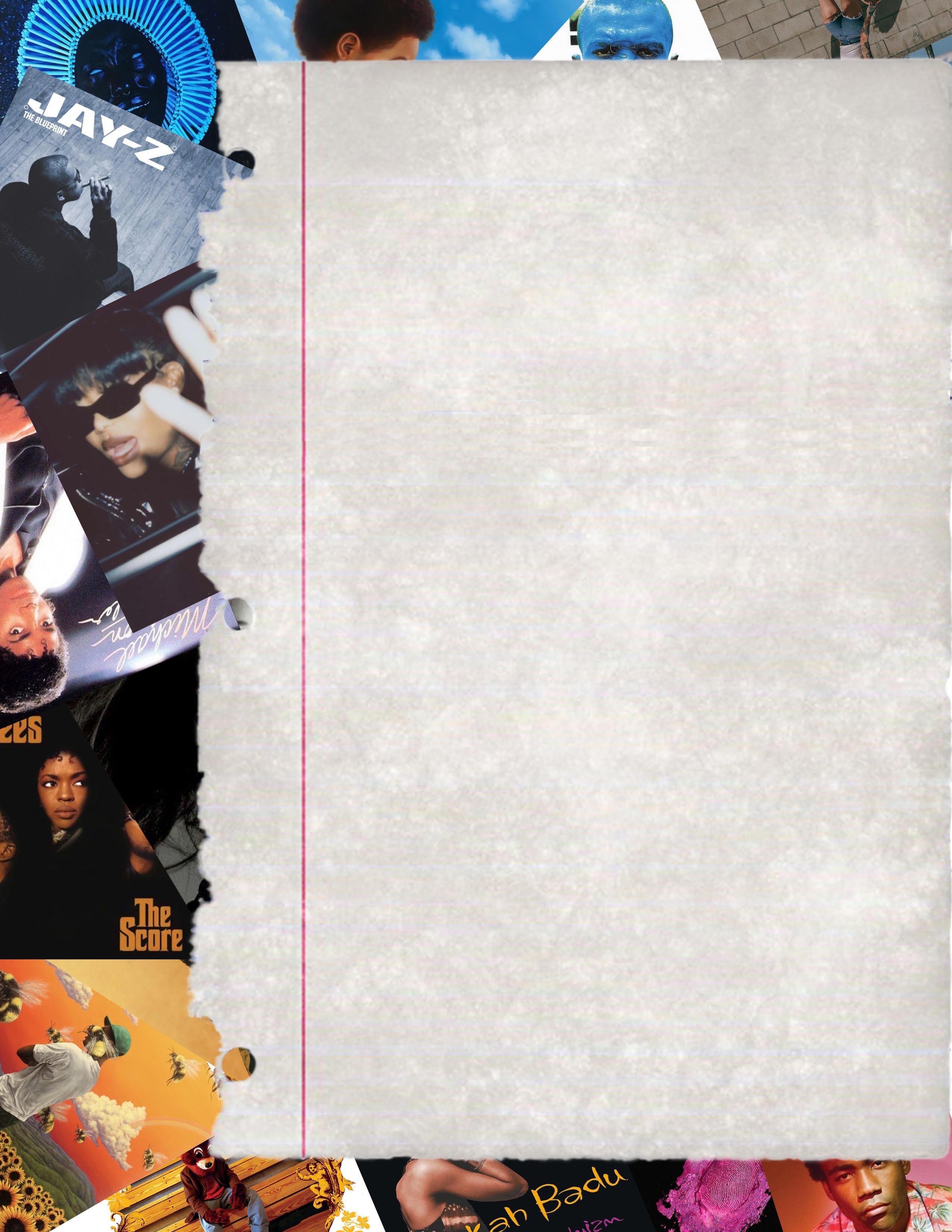
Whether they sang, rapped, hummed, rhymed, or jived it, your most-listened-to artists express their emotions and experiences in more ways than one that resonates with you.
On Frank Ocean’s third studio album, “Blonde,” track number nine, “Nights,” Ocean starts off the song by saying, “‘Round the city, ‘round the clock. Everybody needs you.”
For his listeners who are overextended busybodies–desperately trying to carry the weight of the world on their shoulders– Ocean is telling them, “I see you.” Tyler the Creator is a carefree American rapper, wild card lyricist, and innovative producer. On his fourth studio album, “Flower Boy,” he raps about how living the life you truly want can be intimidating when challenged by the social norms laid out before you.
Tyler confronts that by saying in the second track, “Where the Flower Blooms,” “Tell these black kids they can be who they are/ dye your hair blue/ s***, I’ll do it too.” It’s as if these artists can ring out one’s heart like a towel and turn it into lyrics backed by melody. Making the world a lot less staggering and your life a little less complicated one verse at a time; songs like these connect you to your tribe.
Contextually Familiarity is a pivotal factor when identifying your tribe. Whether the commonality is the same hometown, zodiac sign, family dynamic, or economic class, these parts define us as individuals—as one tribe.
Artists such as Jay-Z, Mary J. Blige, and Kendrick Lamar had some ‘hard-knock’ upbringings. Despite not hailing from wealth, their dreams prevailed. Kendrick Lamar is an excellent storyteller. He describes his chaotic, low-income upbringing in his music through skits or dialogue-like lyrics in albums like “Good Kid, M.A.A.D City,” and “DAMN.” Lamar’s third studio album, “To Pimp A Butterfly,” pushes the envelope on storytelling and musically creativity.
The song “The Art of Peer Pressure” on the album “Good Kid, M.A.A.D City” is a captivating and almost haunting story of a significant turning point in Kendrick’s adolescent life. The lyrics combine the advice from loved ones he disregarded, the retelling of a home invasion he was involved in, and who Kendrick turned into when he was around his “homies.” He describes how he’s usually drug-free and has never been violent until “he’s with the homies.”
Hometown shoutouts are a must when you’re a hometown hero, and Yeezus, also known as, Kanye West, pays countless tributes to Chicago in verses. This gratitude is a staple for him and a badge of honor for his Chi-town listeners. This gratitude is a staple for him and a badge of honor for his Chi-town listeners.
“What if somebody from the Chi’ that was ill got a deal/On the hottest rap label around?/But he wasn’t talking about coke and birds/It was more like spoken word/ Except he’s really putting it down?” – Kanye West, “Through the Wire”
Drake consistently pays homage to the single-parent household and Jewish up bringing that molded Aubrey Graham into Drake. His lyrics reflect his character development from who he was, has become, and is striving to be.
“Bar mitzvah money like my last name Mordecai,” said Drake in his song Worst Behavior.
Time Frame
Certain artists will hold a special place in your Tribe simply because they remind you of a nostalgic period of your life.
The album you listened to while finding yourself, the songs you played on loop every day on the school bus, and the tracks your parents used to play in the car while informing you “you don’t know anything ‘bout this” all have nostalgic value. These records pay homage to who you used to be and have become.
The minute you hear a cherished artist from your past, it’s as if your tribe snatched you out of reality and transported you back to the time their music enthralled you.
Exceptional Quality
Your favorite artist’s most compelling attributes are the qualities that distinguish them from all other artists in the game. These rare flairs are the elements that keep us counting down the hours until their album releases, driving hours away to see them perform live and wrapped around their finger.
The image of an artist is arguably just as important as the music they create. It’s a significant factor in aligning themselves with the members of their tribe. Materialistic components such as fashion choices, catchphrases, personal backstories, distinctive voices, and undeniable showmanship draw fans to their tribe before they even hit play on their music.
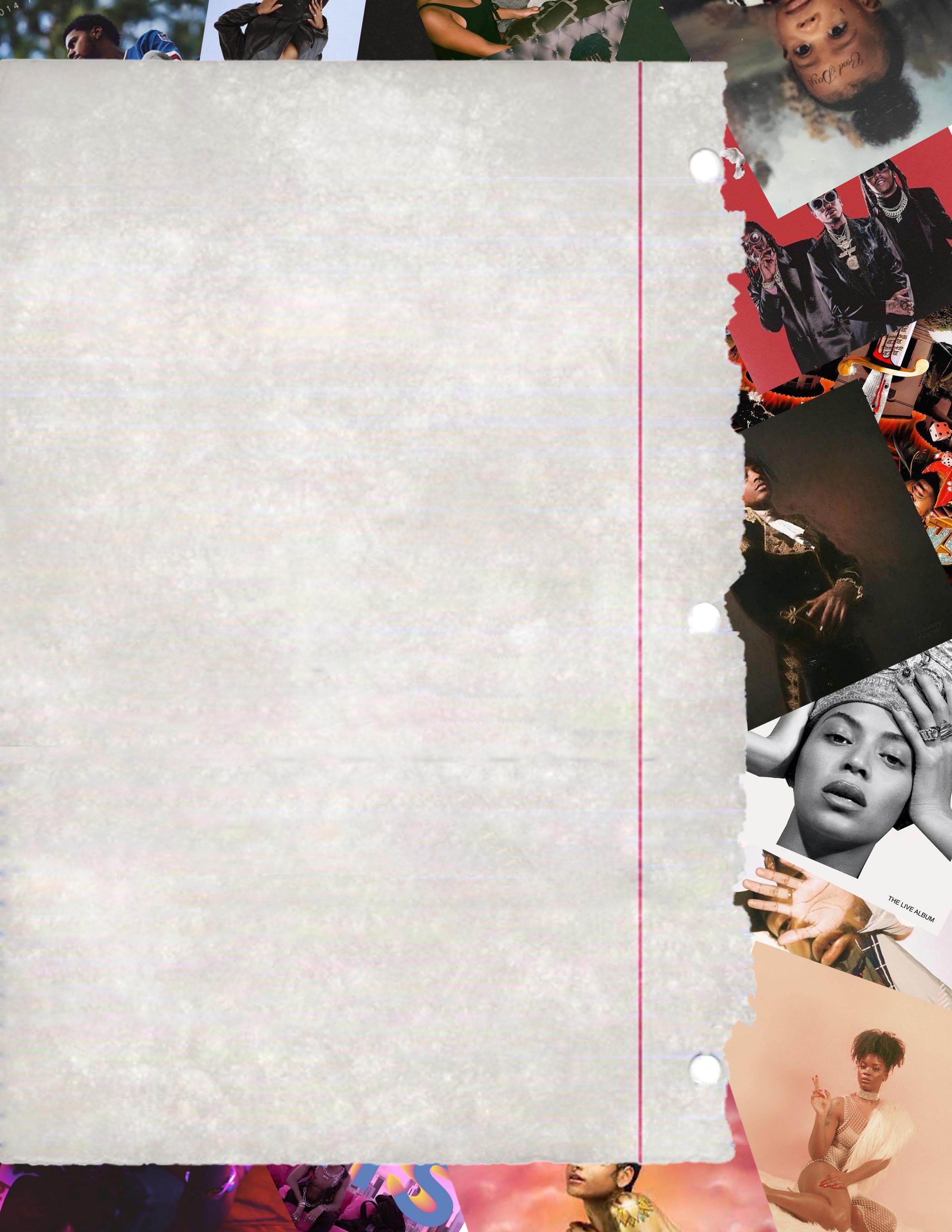
With or without extravagant outfits, Nicki Minaj keeps the “Barbs” eating from the palm of her hands with her consistent, drastic voice and personality changes in her songs and the unapologetic lyrics about being a boss girl by any means necessary. The raspiness of Ari Lennox’s voice, Beyonce’s live performance abilities, or Brock Hampton’s cafeteria-lunch-table-cultivated raps may not be everyone’s cup of tea. Still, it’s one of their character’s most authentic and appealing aspects. And it keeps us coming back for more.
Comfort like no other is the comfort of music and the people who create it. The tribe you find in your headphones is a story only you and the artist can tell, and only your tribe can genuinely hear.
It is one thing to meet someone, but it is a pleasure to know them.
Photo credit to respective artist and album covers -fair use, a provision of U.S. Copyright Law.
by: Terence Watts

38 JOURNEY MAGAZINE - November 2022
Art
Copyright Florida A&M University 2022. All rights reserved. This issue of Journey Magazine was produced by the student organization Journey with essential support from the School of Journalism & Graphic Communication. Journey is funded through the student activity and services fees as allocated by the Student Senate of Florida A&.M University. For more information. contact the Division of Joumalism at (850) 599-3379. 510 Orr Drive. Tallahassee. Florida 32307

JOURNEY MAGAZINE - November 2022 39
